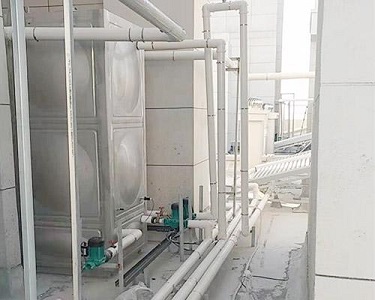The Application of Balance Valve

What is the use of a balancing valve?
Balancing valves are throttling devices designed to regulate the fluid flow through hydronic components. In hydronic systems (HVAC systems that use water as a medium to heat and cool areas of the facility), they facilitate the distribution of heated or chilled water to all terminals.
The Application of Balance Valve
1. Boiler (or chiller) water flow balance
In the boiler room (or chiller room), usually, several machine units are installed in parallel. Due to the different resistances for different machine units, the flow-through machine units are inconsistent, leaving the machine units unable to reach their maximum capacity. In this case, a sanitary valve should be installed on each boiler (or chiller), enabling every machine unit to obtain the flow of design, which ensures the safe and normal operation of every machine unit. When chillers are connected to multiple cooling towers, a balance valve should also be installed on each cooling tower.
2. The water flow balance of the first and second loop of the thermal station
In thermal power stations or in systems where a centralized boiler room supplies hot water for several thermal stations, in order to have each thermal station obtain the required water flow, a balance valve should be installed on the first loop side return pipes of each thermal station. In order to ensure that the water flow of every second loop is the designed flow, a balance valve should also be installed on each second loop side of the thermal station.
3. The water flow balance of neighborhood heating pipe network
In a neighborhood heating pipe network, a single boiler room (or thermal station) often provides heating to several buildings. It consists of the main pipe, several stem pipes, and branch pipes that are connected to the entrance of the buildings. Because each building’s distance from the heat source differs, if there’s not enough effective equipment to eliminate the residual head pressure in the near-loop, the distribution of flow will fail to meet the design requirement. Overheating at the near end and overcooling at the far end will occur. A balance valve should be installed on each stem pipe and at the entrance of each building to ensure the balance of flow between all stem pipes and all buildings in the neighborhood.
4. The water flow balance of the heating (or cooling) pipe network in the building
For demanding heating (or cooling) pipe networks, it is necessary to ensure that all risers (even branch pipes) reach the design to flow. In this case, a balance valve needs to be installed on the main pipe, steam pipe, riser, and branch pipe.
Conclusion
Thank you for reading our article and we hope it can help you better understand the application of the balance valve. If you want to learn more about the application of the balance valve, we would like to advise you to visit Adamant Valve homepage for more information.




